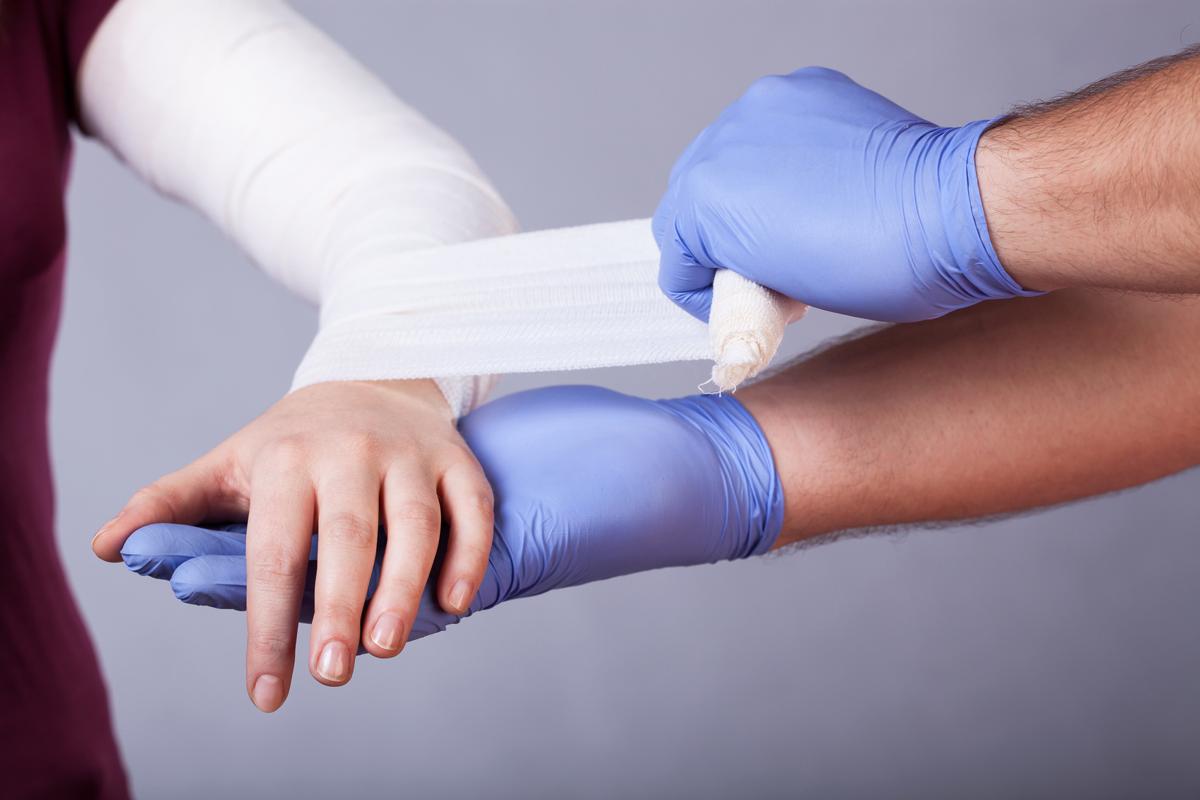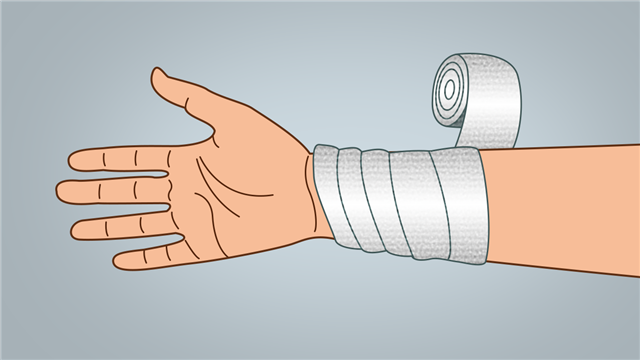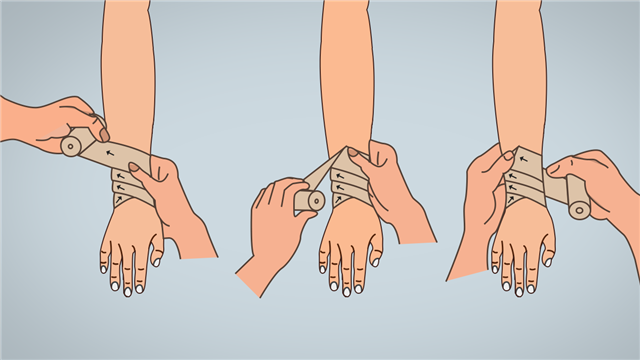
Depending on which part of the body is affected and the type of injury, you have to resort to specific bandage wrapping techniques to facilitate a speedy recovery.
Did You Know?
Technically, the word bandage refers to the material that is used to support the dressing, and not the dressing itself.
A bandage is a material used to provide support to a medical dressing or an injured part of the body. There exist different types of bandages, ranging from simple cloth strips to the ones that are specifically designed for a particular body part. It goes without saying that your first aid kit is incomplete without them. It’s not just important to carry them in the first aid kit. You also need to be well-versed with the wrapping part; at least, the basic techniques.
Bandaging Basics
A bandage is firmly rolled around the affected area to support dressing or stop bleeding. Having said that, its use is not restricted to the same. It can be also used to reduce swelling, support a hurt joint or any part of the body with an internal injury, restrict the movement of an injured part of the body to prevent further complications, and even to support a particular limb whilst indulging in physical activity in order to prevent injury.
There are various bandaging techniques, each specifically targeting a particular area of the body or a particular type of injury. If, for instance, you are bandaging the limb, you will have to hold it transversely in the hand and start rolling it around the limb, such that the outer side of the bandage should come in contact with the inner side of the limb. For this, the bandage has to be rolled from the inner side to the outer side. Though rare, in some cases, the bandage is rolled upwards from below.
The pressure on the part of the body being bandaged should be uniform. Too tight and it will become very discomforting. Once you are done rolling the bandage, its end can be secured using a safety pin or by slitting it and tying it around the limb.
Bandaging Techniques
The most commonly used techniques of bandaging are the circular bandaging, spiral bandaging, diverging spica bandaging, ascending spica bandaging, and recurrent bandaging. Each of these have been discussed below along with illustrations.
Circular Technique

It is the simplest of the roller bandaging techniques wherein the bandage is rolled over the affected area in a circular motion, such that each layer is overlapping the previous layer completely. As we move on to other techniques, you will notice that most of these start and end with circular turns, as it helps in anchoring the bandage. This technique is mostly used on parts of the body with uniform circumference, such as the leg, forearm, or finger.
Spiral Technique
Like the circular technique, even the spiral bandaging technique is used on body parts with uniform circumference. However, the two differ with respect to the way the bandage is wrapped and the area covered. As opposed to the circular technique, wherein each layer is completely overlapped by the subsequent layer, in this technique, each layer only overlaps ⅔ of the preceding layer. Unlike in the case of circular bandaging, wherein the width of the bandage is same as that of the roll of bandage, in the spiral technique, the bandage can be used to cover the entire limb.
Diverging Spica Technique
Also referred to as reverse spiral bandaging, this technique is most often used on body parts with varying circumference. Although the turns are spiral, the bandage is reversed on itself, such that it stays firm on body parts with varying circumference. In this case, you are supposed to secure the bandage after the first turn, hold it by your thumb, and reverse it downward. The same step has to be repeated with each turn.
Ascending Spica Technique

Also known as figure-of-eight bandaging, the ascending spica technique is considered the most useful technique of roller bandaging. In this technique, the bandage is first secured at the joint by a couple of circular turns and then alternately passed over and under the limb, roughly resembling the figure ‘8’ with each double turn. This technique is most often used on joints, like the wrist, elbow, or ankle.
Recurrent Technique

In this case, the bandage is wrapped several times around itselfl; hence the name. Starting from the forehead, it begins with two circular turns. When it reaches back to the forehead, it is secured and taken over the head to the back of the head. Subsequently, it is folded and brought the forehead, and once again taken all the way behind. Every turn goes left and right of the first turn, until the entire head is covered, and then it is secured after rolling it around the head a couple of times. Other than the head, recurrent bandaging is also used on the finger or amputated limb.
Basic knowledge about bandage wrapping techniques can prove handy in times of emergency. We usually tie the bandage in a circular method, wherein each turn covers the preceding turn until the bandage is firmly secured. While it is not incorrect, it is not as effective as other techniques.




